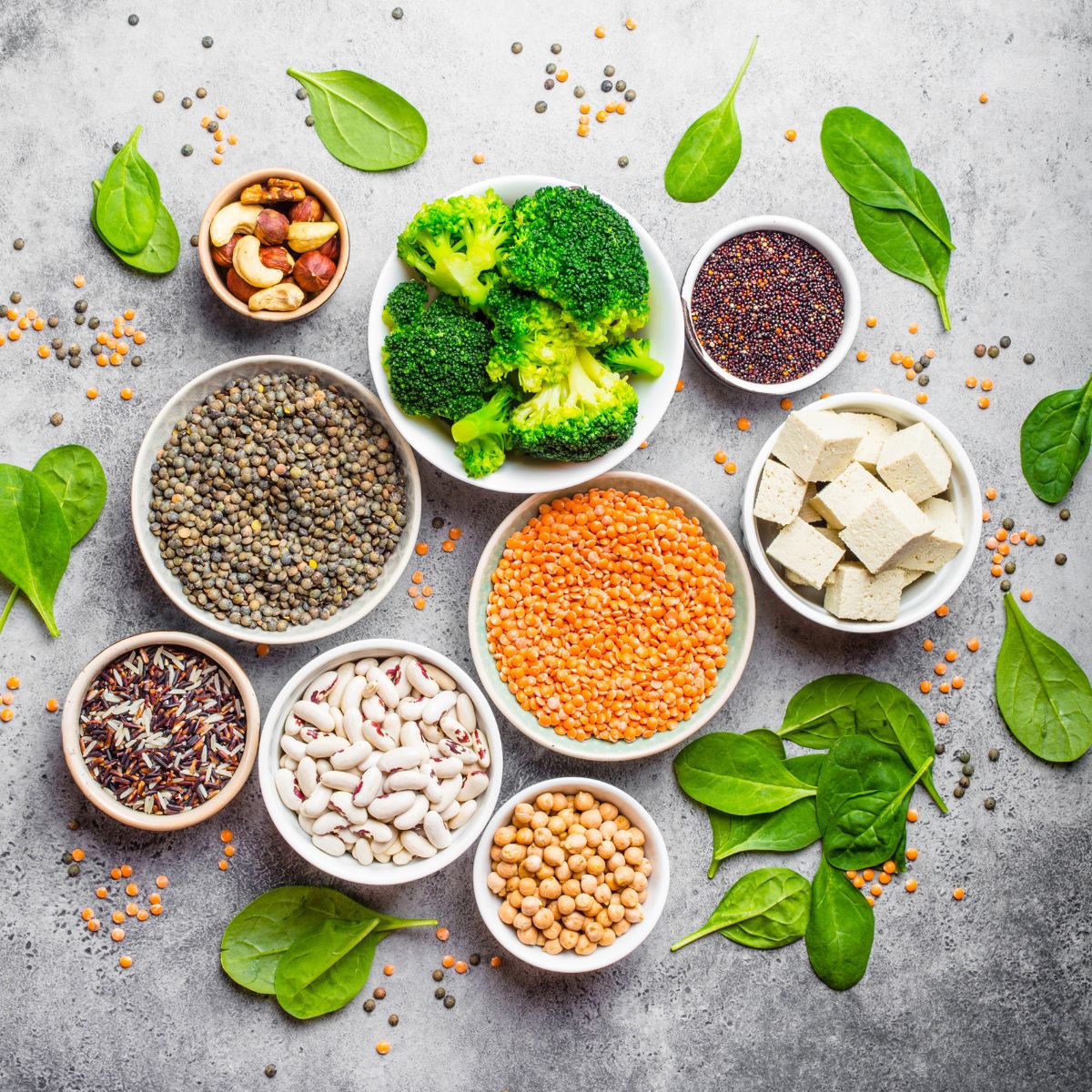

We are a people preoccupied with protein. We have been ever since we discovered the nutrient in the mid-19th century. You might have heard that protein comes from the Greek proteios, meaning “of prime importance.”[1] And it is important—we cannot live without it.
But judging by the level of attention granted to protein—in the mind of the public, in the history of nutrition research, in international health policy decision-making—you might think, 1) it’s more important than all other nutrients, or 2) we struggle to get enough of it.
We know that protein is not more important than other essential nutrients: nutrients our bodies cannot produce enough of to support our health. They are all important in their own way—that’s why they’re essential.
But what about the second point? Is there something about protein that makes it more difficult to obtain? Might that explain its predominant place in our collective psyche?
Just how common is protein deficiency?

The recommended dietary allowance (RDA) for adults is 0.8 grams per kilogram of body weight.[2] This recommendation is calculated by adding two standard deviations to the estimated average requirement (EAR), which is the level of intake estimated to meet the needs of at least half of all healthy individuals.[3]
In effect, the RDA should meet or exceed the needs of 97.5% of all individuals.
This recommendation is very well established.[2] We have known empirically for the better part of a century that 0.8 grams per kilogram of body weight will prevent deficiency in most adults.
Kevin is a healthy young man: he’s 26 years old, moderately active, and weighs 160 pounds (73 kilograms). Based on the above recommendations, Kevin should consume 58.4 grams of protein daily to prevent protein deficiency (73 kilograms x 0.8 grams/kilogram). He likely requires less than that. The average requirement for someone his weight (EAR) is 48.2 grams. But by following the RDA, he greatly reduces his chances of being deficient.
Because he’s young, male, and moderately active, his daily caloric needs—according to the current Dietary Guidelines for Americans—are about 2,600.[4] And this brings us to another way to measure macronutrient consumption: as a percentage of total caloric intake. Measured this way, if Kevin consumes the RDA, he’ll get around nine percent of his calories from protein. (58.4 grams of protein x 4 calories/gram = 234 calories; 234 / 2600 calories = .09). In effect, any diet with more than ten percent of its calories from protein will generally ensure that he’s not deficient.
I’m not recommending you eat a diet composed entirely of red potatoes without the skin. But imagine you did. For every 100 grams of this potato, you will get around 76 calories and a little more than 2 grams of protein.[5] For Kevin to be calorie sufficient on this potato diet would require a lot of potatoes—more than thirty-four 100-gram servings! (2600 / 76 = 34.21). Which would result in nearly 70 grams of protein, safely above the RDA.
How about a diet of exclusively steel-cut oats? It would provide 85 grams of protein.[6]
Even a brown rice flour diet would provide more than 51 grams of protein.[7] So, not quite the RDA, but still, surprisingly, above the average requirement.
You get the point. These foods are hardly known for their high protein content. Play around with the USDA’s food database, and you can see how many vegetables, nuts, seeds, and legumes provide far more protein than they’re usually given credit for.

There may be exceptional cases. But on the whole, if you’re consuming a calorie-sufficient diet with even moderate variety, you’re almost certainly consuming a protein-sufficient diet.
And that’s why protein deficiency is so rare: according to the National Health and Nutrition Examination Survey (NHANES), the average American adult has been consistently getting almost 16 percent of their calories from protein for decades, at least (standard error 0.1).[8]
Copyright 2024 Center for Nutrition Studies. All rights reserved.